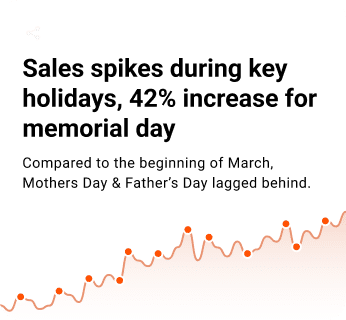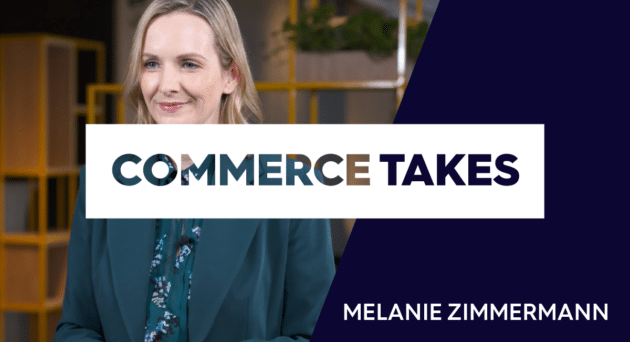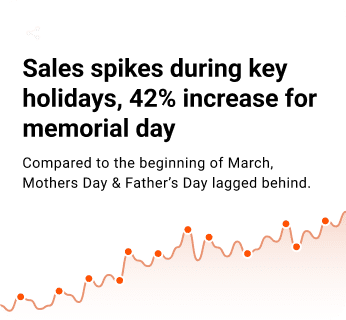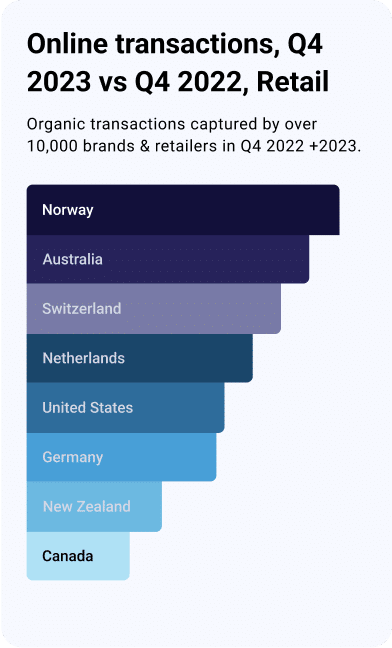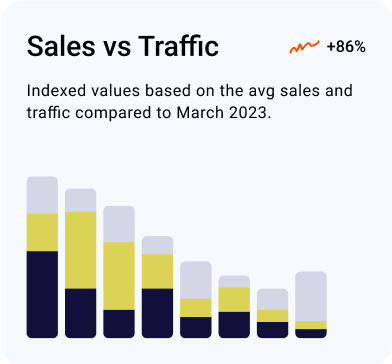Wish you could say goodbye to the chaos of digital advertising?
Programmatic has always been a complex ecosystem, but with advertisers increasingly looking for brand safety, precision targeting, and premium inventory access, the search for simplicity has never mattered more.
For many brands and agencies, Private Marketplace (PMP) deals are filling the gap. They offer a direct line to high-quality, brand-safe placements without the headaches of the open exchange.
Here’s how they could simplify your next media plan.
What is a Private Marketplace (PMP)?
A Private Marketplace (PMP) is a premium, invite-only programmatic space where publishers offer their best ad inventory exclusively to a hand-picked group of advertisers.
PMPs are a type of programmatic direct deal, and the magic lies in their ability to deliver automated transactions that align with advertisers’ requirements—such as brand safety, precision targeting, and premium placements—without the unpredictability of the open exchange.
The only proviso? Advertisers and publishers must collaborate to set terms such as pricing, impression volumes, targeting parameters, and ad formats. With an agreement made, the PMP deal can be generated by the publisher and activated by the media buyer.
Publishers love PMPs because they stay in control of who buys their inventory, while brands enjoy precise, automated access to top-tier audiences. It’s a win-win that blends exclusivity, quality, and ease into one smooth, streamlined package.
Where do deals fit into all of this?
We mentioned that PMPs are a type of programmatic deal—but they’re not the only one.
Programmatic deals come in different flavors, each with their own unique purpose. Here’s a quick breakdown of the most common deal types:
- Open auction. The ultimate free-for-all. Inventory is open to all buyers in a real-time bidding environment. It’s the most accessible and offers significant reach, but it’s also the most unpredictable.
- PMP (a.k.a. private auction). A more exclusive version where premium inventory is offered only to selected advertisers. You get access to high-quality placements without battling it out with everyone on the internet.
- Preferred deals. These are fixed-price (i.e. non-auction-based), non-guaranteed deals between specific publishers and advertisers. They offer more certainty than open auctions but without the rigidity of guaranteed deals.
- Programmatic guaranteed. The gold standard of predictability. Fixed-price, non-auction guaranteed deals with reserved inventory. You know exactly what you’re getting and how much it costs.
PMP deals strike a delicate balance between the accessibility of auctions and the certainty of fixed-price agreements. You get the perks of premium inventory without the stress of the open exchange or the rigidity of locked-in buys.
How do Private Marketplace deals work?
Creating a successful PMP deal might sound daunting, but it’s actually pretty straightforward when you break it down.
Here’s how it works, step by step:
- The publisher builds a supply package. First, the publisher identifies and packages premium, exclusive ad inventory that’s tailored for specific advertisers or campaigns. This step ensures that the inventory is highly relevant and appealing.
- A unique deal ID is generated. The publisher then generates a unique identifier called a “deal ID” for this exclusive inventory. It helps the demand-side platform (DSP) recognize and access the specific inventory package within the bidstream.
- The deal ID is shared with the buyer. The publisher shares the deal ID privately with select advertisers or agencies, giving them exclusive access to the supply package.
- The deal is activated in the DSP. Advertisers plug this deal ID into their DSP, unlocking the exclusive inventory for programmatic buying. Now they’re set up to bid on premium placements.
- The traffic starts flowing. From here, it’s smooth sailing. Ads are automatically bid on and delivered to precisely targeted audiences based on the deal ID. Transactions happen programmatically, ensuring efficient and reliable delivery.
With just a few clicks and the right deal ID, brands can tap into premium, tailored digital advertising opportunities effortlessly. It’s simple, straightforward, and built on existing programmatic pipes.
Why should brands use PMP deals?
With PMPs, brands aren’t just throwing ads at the wall and hoping something sticks. Instead, they’re strategically placing them exactly where they know it’ll resonate. It’s precision marketing without the drama.
Let’s break down why PMP deals are becoming such a, well, big deal.
Brand safety
Nobody wants their ad showing up next to questionable content. PMP deals guarantee ad placements in controlled, trusted environments, so you never have to worry about your brand’s reputation taking a hit.
Quality over quantity
Instead of casting a wide net and hoping for the best, PMPs focus on reaching highly targeted audiences. This makes every impression count toward genuine engagement and real results.
Better audience insights
PMP deals are often where you’ll find richer, more detailed audience data—like Criteo Commerce Audiences. This means your targeting is sharper, your strategy is smarter, and your campaigns perform better. Win, win… win!
DSP-agnostic flexibility
One of the most significant advantages of PMP deals is that they’re DSP-agnostic. So, no matter which DSP you (or the brands you represent) are using, you can still activate PMP deals without disrupting existing workflows.
PMP deals vs. the open exchange
There’s no doubt that the open exchange still has its charms, but it’s a bit like standing in the middle of a busy marketplace. There are plenty of options, and no shortage of inventory, but there’s always the risk that your ad ends up somewhere you don’t want it to be.
PMP deals, on the other hand, are more like getting a VIP access to a curated gallery. You know what you’re getting: Quality, exclusivity, and total control over where your ads appear. No nasty surprises, just pure brand safety.
5 top tips to create successful PMP deals
Once you’re set up, PMP deals can make a huge difference to your programmatic strategy.
But success doesn’t just happen on its own—you’ve got to set the stage. Here’s how:
1.) Clarify your campaign goals.
Don’t wing it. Get crystal clear on your target audience, key performance indicators (KPIs), and what success looks like before setting up a PMP deal. Specificity here pays off big time.
2.) Choose publishers wisely.
Not all publishers are created equal. Look for reputable partners whose content aligns with your brand values and audience goals. Quality always wins.
3.) Optimize your bid strategy.
Just because it’s a premium environment doesn’t mean you should overpay. Experiment with bid levels within your DSP to maximize results without breaking the budget.
4.) Leverage audience data.
Data is your best friend. Integrate both first-party and third-party insights to refine your targeting and make your campaigns more effective.
5.) Analyze, adjust, repeat.
PMP deals aren’t set-it-and-forget-it. Keep an eye on performance and use real-time analytics to tweak bids, targeting, and deal terms throughout the campaign. Agility is key.
PMP deals give you clarity, control, and a greater sense of brand security—all wrapped up in one neat little package. Want to see some real deals? Explore the Commerce Grid Deals Library now.













